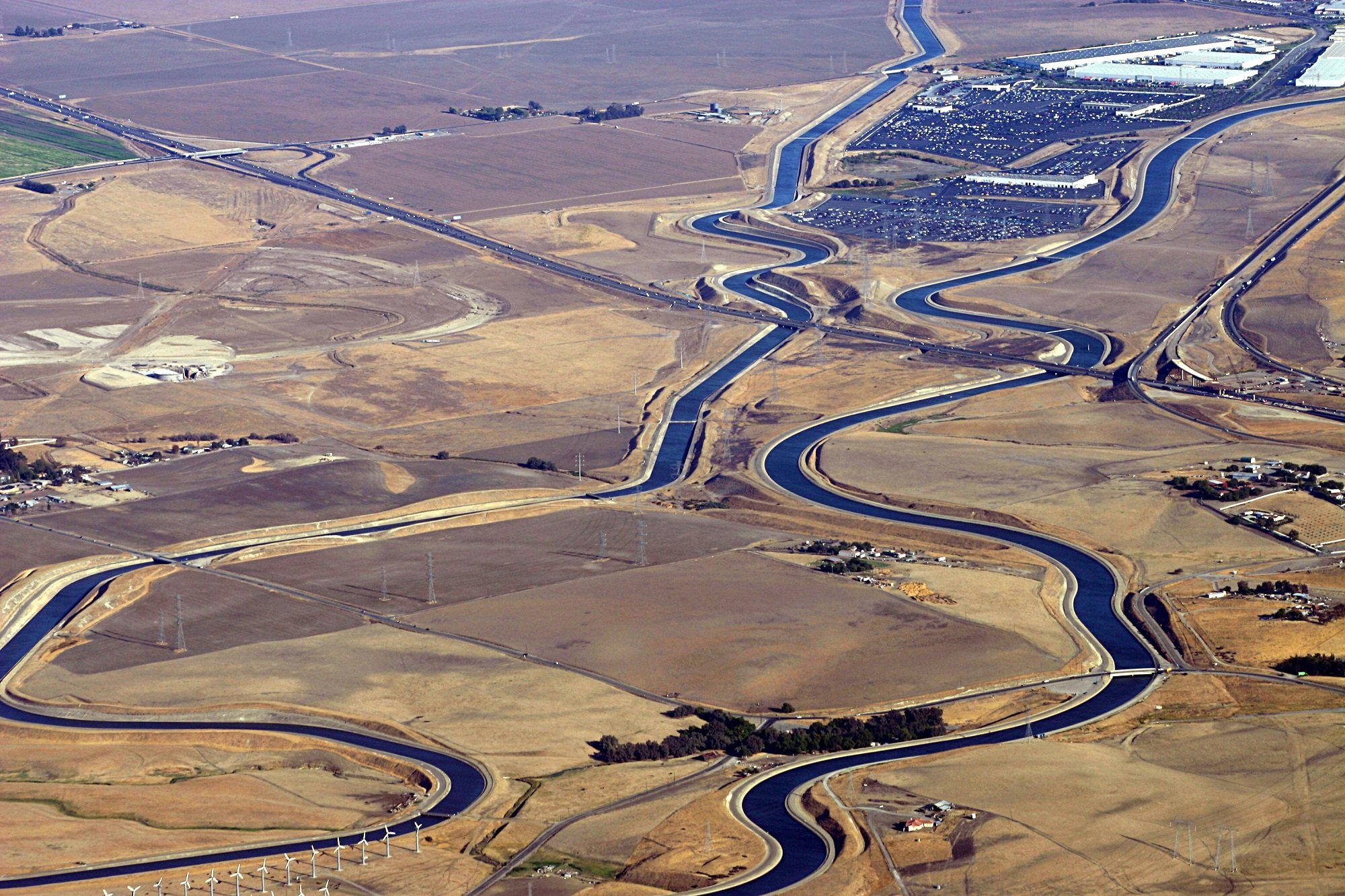California unveils research into ‘floating solar’ project over major canal
California is using federal dollars for infrastructure improvement to pilot placing solar canopies over parts of its aqueducts to improve green energy production. California is using federal dollars for infrastructure improvement to pilot placing solar canopies over parts of its aqueducts to improve green energy production. The pilot project involves placing a solar canopy over a major waterway as a source of renewable energy and prevent loss of precious water through evaporation. $19 million from Biden's fund is used to fund solar projects, with $15 million going towards making “floating solar” research happen. The Department of Water Resources is also investing $20 million in two canal sites near Turlock to study how fixed solar panels over canal structures could also work. California's governor, Gavin Newsom, praised the federal government for investing in infrastructure, while criticizing the previous administration for failing to achieve its promises.

Published : 4 weeks ago by in
California is using federal dollars for infrastructure improvement to pilot placing solar canopies over parts of its aqueducts to improve green energy production.
LOS BANOS, Calif. (CN) — Canals in California may soon feature a new look — solar panel canopies, designed to stop evaporation and soak up the sun's rays, created under a new project funded with help from the federal government to boost green energy infrastructure.
Governor Gavin Newsom joined staff from the U.S. Bureau of Reclamation on Thursday to highlight a new “solar-over-canal” project along one of the state’s primary aqueducts. The pilot project proposes placing a solar canopy to “float” over a major waterway as a source of renewable energy that can also prevent loss of precious water through evaporation.
Adam Nickels, Deputy Regional Director at the Bureau of Reclamation, said that the Biden Inflation Reduction Act helped make it possible to pick a portion of the Delta-Mendota Canal for placement of a solar panel in Merced County.
About $19 million from Biden’s fund is designed to help fund solar projects, with $15 million going toward making “floating solar” research happen.
Commissioner Camille Calimlim Touton of the Bureau of Reclamation said that researchers hope to identify the best design for floating solar projects and what will work to pair with existing waterways.
Representative Jim Costa, a Democrat from Fresno, praised Biden for investing in infrastructure while criticizing the former Trump administration for making promises to do so “that never happened.”
“These pilot projects will go a long way in other efforts to ensure that California’s water needs are met well into the 21st century,” Costa said. "This is about the environment, this is about our urban water needs and this is about agriculture.”
Representative Jared Huffman, a Democrat from San Rafael, said that canals present an opportunity to turn waterways into clean energy capture sites. He pointed out the importance of the canal and forebay in the San Joaquin valley, and to the process of moving water throughout California.
The bureau’s regional director Karl Stock said that he thinks solar canopies over water canals will become a crucial part of the state’s water management system to reduce evaporation.
“The way we were talking about desalination and water treatment 23 years ago is very much the same as how we’re talking about solar over waterways today,” Stock said.
Karla Nemeth, director of California’s Department of Water Resources, said that the department is also investing $20 million in two canal sites near Turlock to study how fixed solar canopies over canal structures could also work.
Newsom said Thursday that work on the Merced County pilot began in February 2022, and was a “stubborn process” because not everyone in the region supported the idea of "solar-over-canal." But such projects can generate 3% higher efficiency energy using moving water, while reducing evaporation and creating land-based solar in areas which do not compete with agricultural land, he said.
The work also fits into the state’s newly updated five-year water plan, and the push to decarbonize its energy grid, the governor said.
“It’s a no-brainer, it just makes sense to do something that has so many co-benefits,” Newsom said. “We are doing unprecedented work to modernize our water infrastructure.”
Standing near the aqueduct surrounded by Central Valley farmland, Newsom took a jab at some Republican counties’ disdain for him, noting the large signs and billboards calling to recall him which still stand along Interstate 5.
“I drive through this state, and a few years back I thought, wow I’m getting real popular — my name is appearing everywhere up and down Highway 5,” he said. “I realized quickly it was for different reasons. It’s always good to be back here in the valley.”
The state this week released an updated California Water Plan, including a Water Resilience Portfolio. It includes 142 actions for building new infrastructure to store and move water, such as “solar-over-canal,” as part of California’s Water Supply Strategy.
